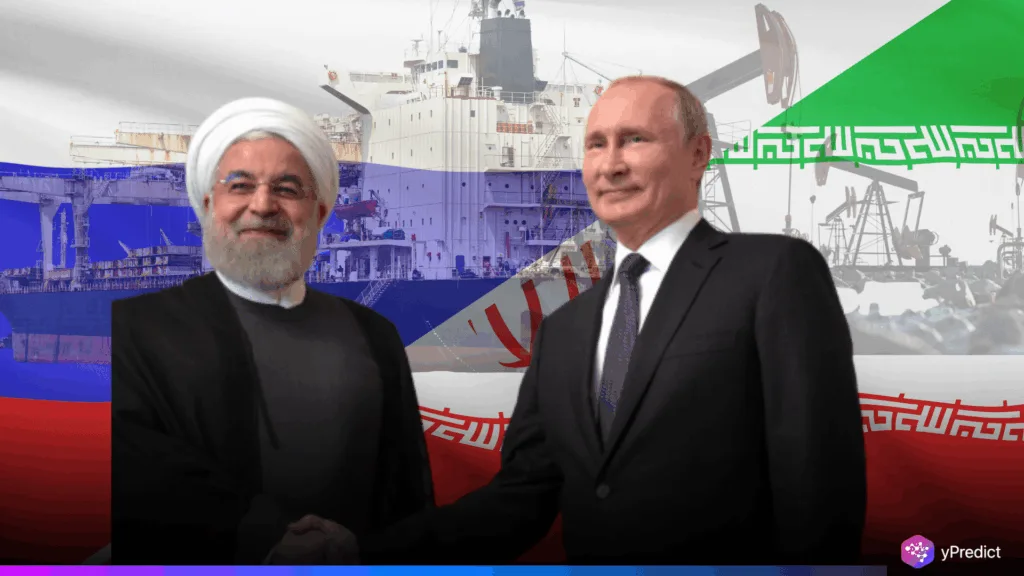
The United States has imposed new oil sanctions on a major shipping network. The network, allegedly led by the son of a prominent Iranian politician, seeks to halt Iran’s global oil trade. Moreover, the network was essential in transporting oil from Iran and Russia to consumers around the world, especially in Asia.
The Treasury’s extensive action targets more than 115 companies, individuals, and tankers worldwide. It also represents one of the Trump administration’s most assertive actions to date. Officials warn that following recent US strikes on nuclear facilities, this action could significantly cut Iran’s exports. Furthermore, it may put more pressure on Tehran.
Oil Sanctions Shake Iran’s Shipping Empire
The newly sanctioned shipping network is reportedly managed by Hossein Shamkhani, whose father is an adviser to Iran’s Supreme Leader. This complex network is accused of planning the sanctioned oil shipment covertly through dishonest means. Moreover, officials assert that these activities transfer billions of dollars into Tehran’s budget. These are then used to support Iran’s contentious nuclear endeavors and regional instability.
US officials claim that multiple middlemen are frequently involved in getting these exports to Chinese refiners. Washington also intends to obstruct the sources of income that support Iran’s oil-dependent economy. Thus, this measure is among the most extensive sanctions aimed at oil to date due to the network’s size and coordination.
How Oil Sanctions Uncover Iran-Russia Crude Routes
The shipping network spans several continents and reaches ports in East Asia and the Persian Gulf. Its fleet uses ship-to-ship transfers, shell corporations, and fake documentation to hide its origins. Additionally, these strategies have made it alarmingly easy to get around previous sanctions.
Treasury Deputy Secretary Michael Faulkender said the Shamkhani-run system allows Iran to export on a massive scale despite international sanctions. The penalties are a part of a larger effort to revive and implement the “maximum pressure” campaign. This is particularly in light of intelligence reports that Iran’s nuclear program has only experienced temporary setbacks.
Deputy Secretary Faulkender posted images on X of tankers that have been sanctioned and anchored at notable international ports. Various infographics demonstrated the logistical difficulties of bringing Iranian and Russian oil into markets in spite of sanctions. Additionally, the Treasury post tagged allies to promote concerted action.
Will Iran and Russia Rebound from Energy Isolation?
The resumption of nuclear talks with Iran has mostly stalled. US officials acknowledge in private that diplomatic negotiations are no longer a top priority. Trump also said that Iran’s uranium program had suffered a major setback following recent airstrikes. However, the Pentagon estimates that Iran could be able to resume enrichment within a few years.
The new oil sanctions complicate any future agreements. Experts say meaningful dialogue is unlikely as long as the regime’s ambitions are still financed by Iran’s exports. As global scrutiny of financial avenues increases, backdoor oil sales are expected to decline.
Can Global Oil Markets Absorb the Fallout Ahead?
The already tense US-Iranian relations are made more complicated by this crackdown. The US is gaining more control over one of Iran’s final significant sources of income by attacking the shipping network. Furthermore, experts believe that the real test will be whether these sanctions are maintained in the face of changing geopolitics. Iran might look into new deceptive strategies or different alliances as Washington tightens its blockade. Thus, the next phase of the Iran-US standoff anticipates further uncertainty for the oil markets, considering the expansion of oil sanctions.







